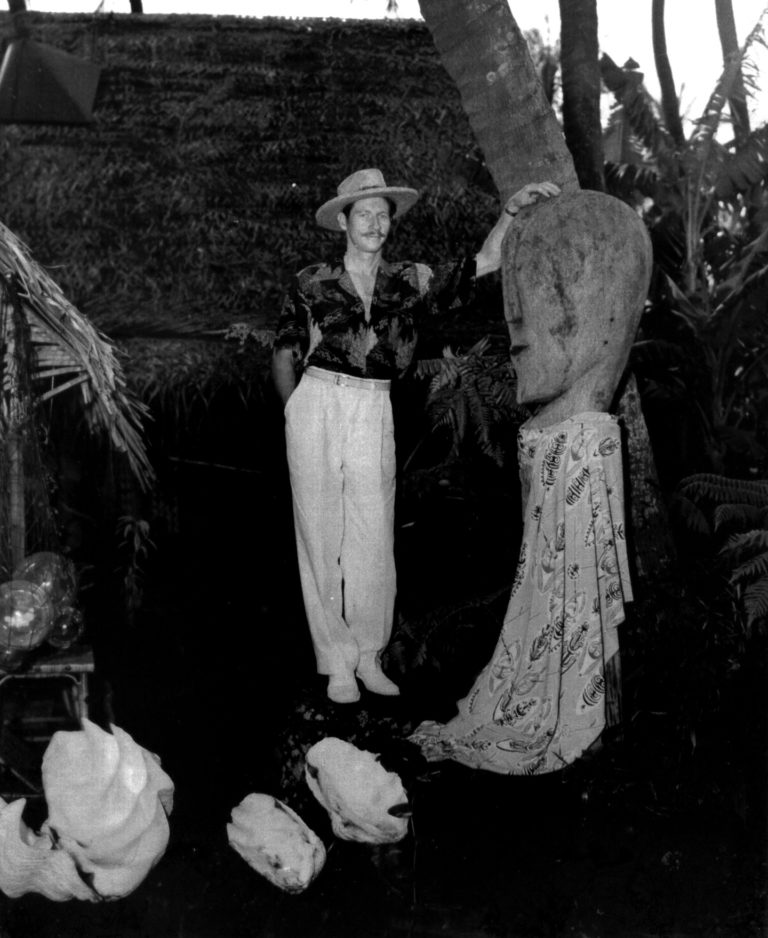About the exhibit
Art of the Aloha Shirt: Keoni of Hawaii, 1938–51
Although many claim authorship, the exact origin of the Aloha shirt remains uncertain. The patterns of Polynesian tapa cloth, the colorful and bold floral designs of Tahitian pareau, and the sheer Japanese fabric used for making kimonos are often cited as some of the early stylistic influences of the shirt. Sometime in the late 1920s to the early 1930s, when Hawaii’s economy began to shift from an agricultural to a service-oriented economy and tourists started flying to Hawaii in ever-increasing numbers, the emphasis of the island clothing industry shifted from the production of work clothes to sports and casualwear. Combining the young islander’s love for colorful clothing with the tourist’s desire to bring home keepsakes of their holidays on the islands, the Aloha shirt enjoyed massive popularity, particularly after the conclusion of the second World War.
In the history of the Aloha shirt, there has been no more innovative merchandiser nor better self-promoter than “Keoni of Hawaii.” John “Keoni” Meigs (“Keoni” is Hawaiian for John) was a self-taught painter whose talent became known to the early shirt manufacturers in Honolulu. In 1938, he created his first designs, concentrating on Polynesian tapa patterns inspired by the originals he had studied at the local Bishop Museum.
One of the most innovative Island fabric artists, Keoni is credited with creating as many as three hundred Aloha shirt designs. In Meigs’ words, “In a sense, Aloha shirts put Hawaii on the map. The first thing people did when they arrived was make a beeline for a department store to buy one. A lot of kooky things were designed, but I always tried to be a purist when it came to using motifs from Hawaiian sources.”
Art of the Aloha Shirt is curated by Dale Hope, a Hawaiian native and second generation veteran of the garment industry who authored the definitive book on the subject, The Aloha Shirt: Spirit of the Islands, in 2000. Much of the work draws from the collection of Dan Eskenazi, which offers viewers the opportunity to see Aloha shirts from a designer’s perspective, as well as excellent vintage examples of the finished product.
This exhibition is toured by ExhibitsUSA, a national program of Mid-America Arts Alliance. ExhibitsUSA sends more than twenty-five exhibitions on tour to over 100 small and mid-sized communities every year. These exhibitions create access to an array of arts and humanities experiences, nurture the understanding of diverse cultures and art forms, and encourage the expanding depth and breadth of cultural life in local communities. For more about ExhibitsUSA, email MoreArt@maaa.org or visit www.eusa.org.
Mid-America Arts Alliance (M-AAA) strengthens and supports artists, cultural organizations, and communities throughout our region and beyond. They achieve this primarily through their national traveling exhibition programs, innovative leadership development, and strategic grant making. M-AAA is especially committed to enriching the cultural life of historically underserved communities by providing high quality, meaningful, and accessible arts and culture programs and services. They believe in more art for more people. Additional information about M-AAA is available at www.maaa.org.
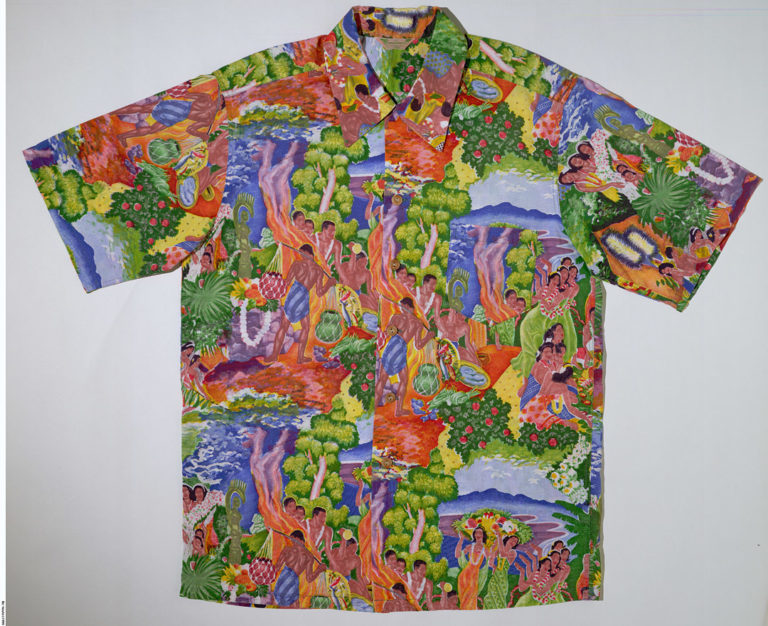
John “Keoni” Meigs, Island Feast, 1946, manufactured by Kamehameha; cotton, 35 x 35 x 24 inches; © Keoni Collection.
John “Keoni” Meigs, painting for Waikiki Reef, c. late 1940s; gouache on paper, 24 x 30 inches; © Keoni Collection.
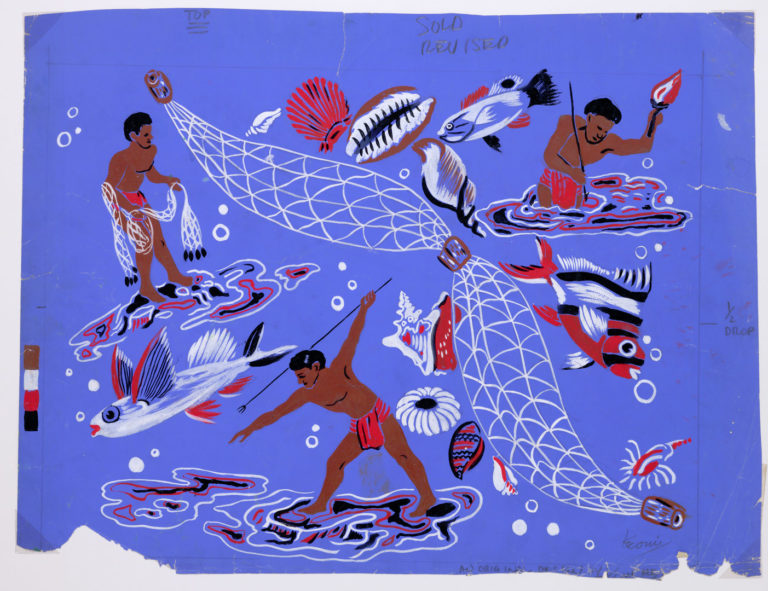
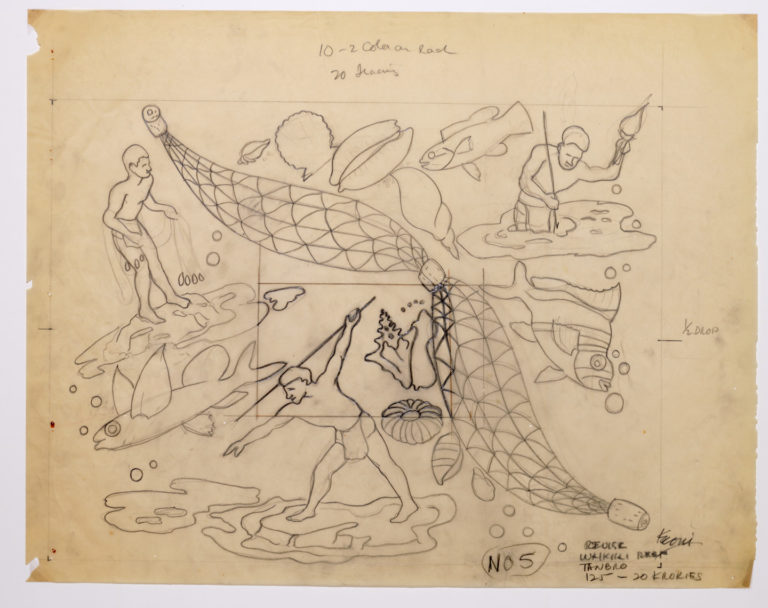
John “Keoni” Meigs, preliminary design for Waikiki Reef, c. late 1940s; pencil on vellum, 24 x 30 inches; © Keoni Collection
Advertisement for Munsingwear boxer briefs, c. late 1940s; ink on paper, 12 x 9 inches; Courtesy of private collection.
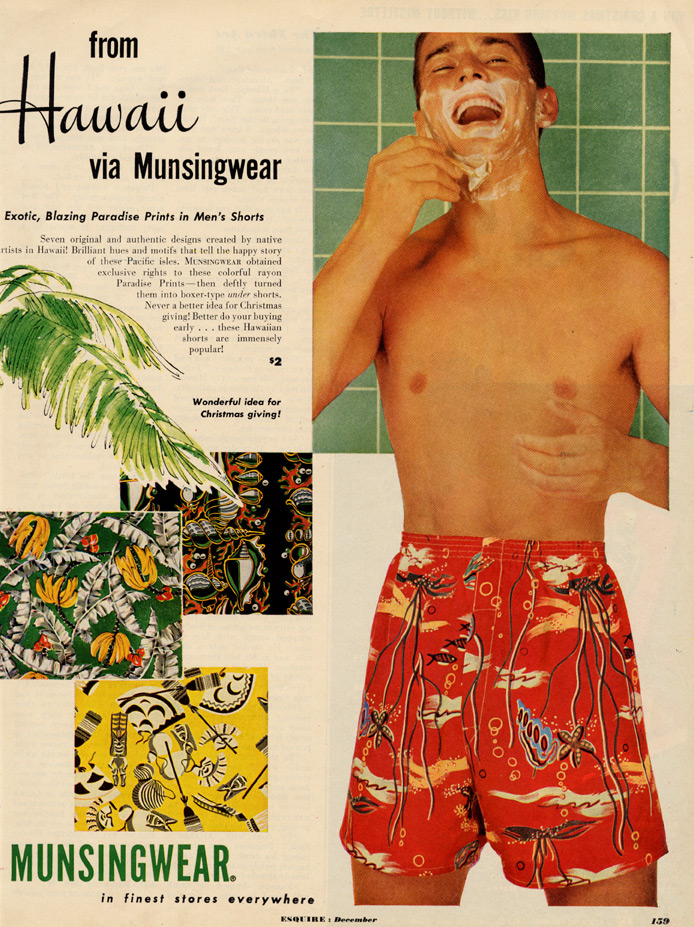
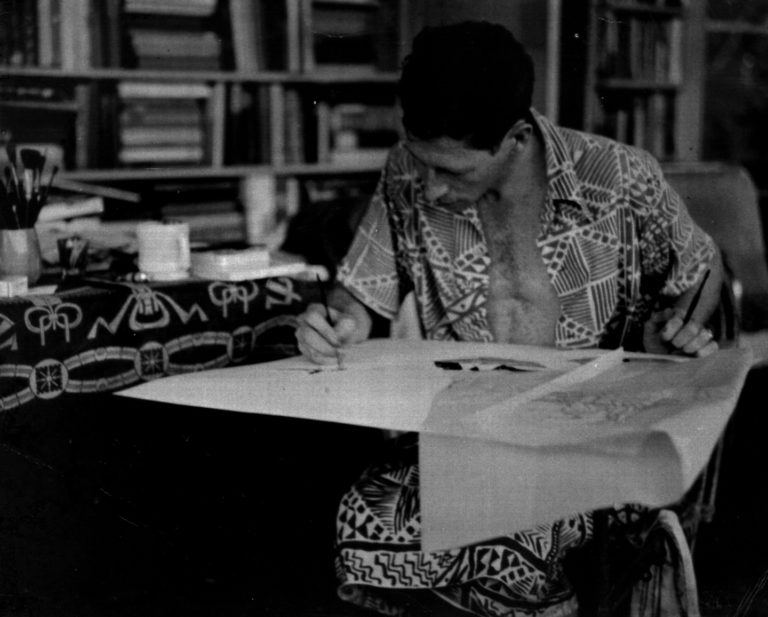
Unknown photographer, Dressed in an aloha shirt and lava-lava, Keoni works on a textile design, c. 1940s; digital image; © Keoni Collection.
Unknown photographer, Artist John “Keoni” Meigs was one of the foremost designers in Hawaii…, c. 1940s; digital image; © Keoni Collection.
